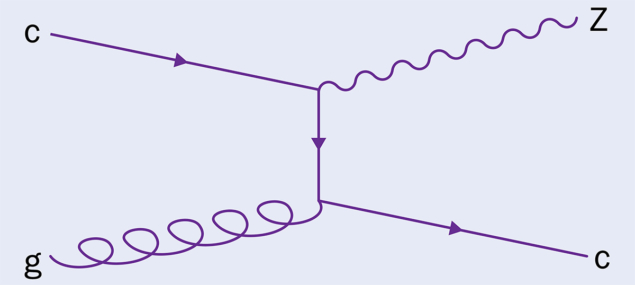A report from the LHCb experiment

The possibility that the proton wave function may contain a |uudcc> component in addition to the g → cc splitting arising from perturbative gluon radiation has been debated for decades. In favour of such “intrinsic charm” (IC), light-front QCD (LFQCD) calculations predict that non-perturbative IC manifests as percent-level valence-like charm content in the parton distribution functions (PDFs) of the proton. On the other hand, if the charm–quark content is entirely perturbative in nature, the charm PDF should resemble that of the gluon and decrease sharply at large momentum fractions, x. The proton could also contain intrinsic beauty, but suppressed by a factor of order m2c/m2b. The picture for intrinsic strangeness is somewhat murkier due to the lighter mass of the strange quark.
Measurements of charm-hadron production in deep-inelastic scattering and in fixed-target experiments, with typical momentum transfers below Q = 10 GeV, have been interpreted as evidence both for and against the IC predicted by LFQCD. Even though such experiments are in principle sensitive to valence-like c-quark content, interpreting low-Q data is challenging since it requires a careful theoretical treatment of hadronic and nuclear effects. Recent global PDF analyses, which also include measurements by ATLAS, CMS and LHCb, are inconclusive and can only exclude a relatively large IC component carrying more than a few percent of the momentum of the proton.
Using its Run-2 data, LHCb recently studied IC by making the first measurement of the fraction of Z+jet events that contain a charm jet in the forward region of proton–proton collisions. Since Zc production is inherently at large Q, above the electroweak scale, hadronic effects are small. A leading-order Zc production mechanism is gc → Zc scattering (figure 1), where in the forward region one of the initial partons must have large x, hence Zc production probes the valence-like region.

The spectrum observed by LHCb exhibits a sizable enhancement at forward Z rapidities (figure 2), consistent with the effect expected if the proton wave function contains the |uudcc> component predicted by LFQCD. Incorporating these results into global PDF analyses should strongly constrain the large-x charm PDF, both in size and shape – and could reveal that the proton contains valence-like intrinsic charm.
These results demonstrate the unique sensitivity of the LHCb experiment to the valence-like content of the proton. Looking forward to Run 3, increased luminosity will lead to a substantial improvement in the precision of this measurement, which should provide an even clearer picture of just how charming the proton is.
Further reading
LHCb Collaboration 2021 arXiv:2109.08084.







